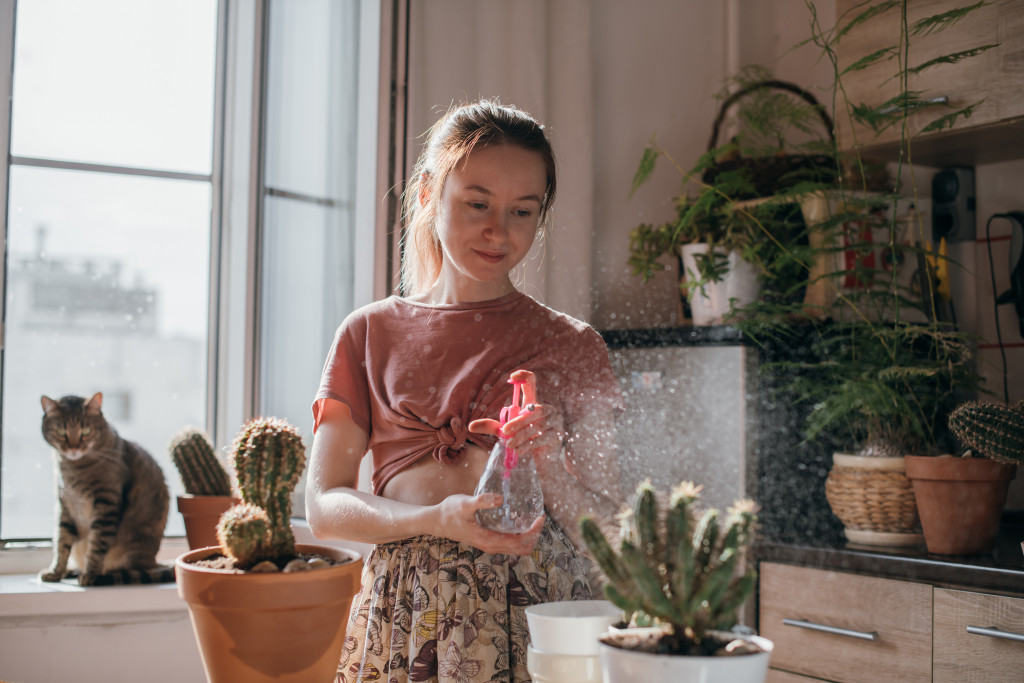Having indoor plants is a great way to make your home more vibrant and colorful. Not only that, but studies show that keeping plants in your home can improve your mental health and provide cleaner air for you and your family to breathe in.
But if you’re like most people, you don’t have a green thumb. But that doesn’t mean you can’t enjoy the beauty of indoor plants. You can be a successful houseplant parent with these simple tips:
Choose the right plants
The first step to success is choosing the right plants. Begin by finding out what type of light is available in your home. Some plants need bright direct sunlight, while others do best with indirect light or shade. Knowing how much light is available will help narrow down your choices so that you choose plants suited to their environment, increasing the chances they will thrive.
And when you’ve finally chosen what plants to go for, make sure you only purchase from reputable nurseries and garden centers. This will ensure that your plants are healthy, properly cared for, and free of disease and pests.
Place them next to your windows
Plants need light to survive, so the next step is placing them in a spot where they will get plenty of natural light. Ideally, you should place your plants near windows that open. You should also ensure you have the right windows with the right amount of sun exposure for your plants. For example, if you’re growing herbs or succulents that need four hours of direct sunlight each day, then you should choose a south-facing window where they will get at least six hours of natural light each day.
Additionally, your windows should be in good condition and free from dust, so it’s a good idea to clean them regularly. If they’re damaged, call a window replacement service provider. They can replace the damaged parts, restoring your windows to their original luster. This is important as damaged windows can make your home susceptible to water damage and let cold air in during the winter.

Keep it well-watered
Most houseplants prefer soil that is slightly damp but not soaked. Before watering, use your finger to check if the top inch or two of the soil feels dry; if it does, give it some water! Remember that different plants have different water needs; for example, succulents require less frequent watering than ferns or palms. Researching your specific plants will help ensure they get just the right amount of hydration.
Prune away dead leaves and stems
It’s important to remove any dead leaves or stems from time to time so that energy isn’t wasted on growth that won’t produce blooms or fruit. Trim away any browning leaves at the base of the stem, as this allows more energy and nutrients to reach living parts of the plant, which helps keep them healthy and vibrant.
Look out for pests and disease
Even the most well-cared-for plants can be affected by bugs and diseases. Regularly inspect your houseplants and look out for signs of insects or illness. Common pests include aphids, mealybugs, spider mites, scale insects, and whiteflies. And if you notice any spots or yellowing on your leaves, suspect disease and call in a professional gardener or landscaper to check it out.
Fertilize regularly
Fertilizing once a month gives your plants an extra boost of nutrition which can help them grow bigger and brighter! Make sure to choose a fertilizer specifically designed for houseplants since fertilizers meant for outdoor plants may contain too much nitrogen, which can burn delicate foliage indoors.
You can also make fertilizer by sprinkling a tablespoon of Epsom salt on the soil and then watering it in. This is a great option as Epsom salt is an inexpensive and safe way to add essential magnesium and sulfur to your plants’ soil, helping them to grow strong and healthy. But be sure not to over-fertilize as this can cause leaf drop or even kill the plant.
Repot when necessary
As houseplants grow bigger, they often outgrow their pots—so make sure to repot them when needed! It’s best to repot in springtime when temperatures are milder, and plenty of natural light is available; this will give your plant a better chance of surviving in a larger home. Also, be sure to use potting mix specifically designed for houseplants as this contains fewer nutrients than regular garden soil, so it won’t burn delicate roots or stunt growth over time.
Caring for indoor plants isn’t rocket science; it requires patience and dedication. By following these tips, you’ll be well on your way towards becoming an expert indoor gardener who can nurture beautiful greenery in their own home all year round. With just a little effort, anyone can have an indoor paradise filled with lush foliage thanks to these helpful tips for keeping houseplants alive and thriving.

